Do you have a question about the Pioneer CT-W600R and is the answer not in the manual?
Details on locating and adjusting the line voltage selector switch on the rear panel.
Information on finding the serial number for security and warranty purposes.
Statement regarding compliance with Canadian regulations for digital apparatus.
Covers reading instructions, heeding warnings, and following operating procedures.
Advises on avoiding water, heat, and ensuring proper ventilation and stable location.
Details power cord protection, polarization, servicing, and handling potential damage.
Provides guidelines for grounding outdoor antennas according to electrical codes.
Advises on avoiding high temperature, humidity, direct sunlight, and heat sources.
Explains how to handle condensation when moving the unit between environments.
Provides information for US users regarding FCC rules on radio frequency interference.
Reduces high-frequency tape hiss noise for improved sound quality.
Automatically detects tape type to set recording bias and equalization.
Allows skipping tracks and unattended recording/playback with an audio timer.
Enables tape copying between decks and system control via remote.
Explains the function and usage of the MPX FILTER switch.
Details the CONTROL IN and CONTROL OUT jacks for system remote control integration.
Guides on properly connecting input and output cords to the stereo amplifier.
Explains the power switch, headphone jack, recording level, and eject buttons.
Details the REC BALANCE, MUTE, PAUSE, and REC buttons for recording operations.
Explains the TIMER MODE, REVERSE MODE, DOLBY NR, RELAY/SKIP, and SYNCHRO COPY controls.
Details the Rewind, Play, Stop, and Fast Forward buttons for tape operation.
Explains indicators for Deck I transport modes and Synchro Copy operation.
Describes indicators for Relay Play, the level meter, and Dolby NR B/C status.
Illustrates various tape movement states like Stop, Playback, Recording, Fast-forward, and Rewind.
Details specific modes for Deck II, including Recording Pause, Playback Pause, Mute, and Search.
Explains the operation of the REVERSE MODE switch for one-way and repeat playback.
Describes the rotary head used for both forward and reverse direction recording/playback.
Guides on checking tape slack, stopper removal, and erasure prevention tabs.
Explains the automatic tape selector function and notes on sensor holes for tape types.
Offers tips on using leader tape, storing tapes, and avoiding issues with C-120 tapes.
Step-by-step guide for inserting tape, setting switches, and starting recording.
Instructions on setting optimal recording levels and balancing left/right channels.
Explains the MUTE function for creating blanks and BLANK SEARCH for finding recording spots.
Steps for playing back a tape on either Deck I or Deck II individually.
Details the BLANK SKIP function and operating Deck I with specific remote units.
Explains continuous playback across both decks and momentarily stopping playback on Deck II.
How to skip forward or backward to find desired selections or the beginning of a track.
Notes on conditions affecting Music Search accuracy and how selections are counted.
Step-by-step instructions for copying tapes from Deck I to Deck II at normal or high speed.
Explains the differences between normal and high-speed copying and control behavior.
Guide to unattended recording using an audio timer, including setting the mode and source.
Instructions for wake-up playback using an audio timer, including setting the mode and volume.
Detailed steps for cleaning heads, pinch rollers, and capstans for optimal sound quality.
Instructions on demagnetizing heads and cleaning the front panel section.
Solutions for issues like the unit not turning on or the cassette door not opening/closing.
Addresses problems such as immediate stops, no sound, or recording indicators not lighting up.
Solutions for unstable sound, lack of high frequencies, distorted sound, and excessive noise.
Troubleshooting for music search not working, sudden power activation, and remote control issues.
Details on heads, motor, frequency response, signal-to-noise ratio, and noise reduction effects.
Information on power requirements, consumption, unit dimensions, weight, and included accessories.
| power requirements (U.S., Canadian models) | AC 120V, 60 Hz |
|---|---|
| power requirements (European model) | AC 220V, 50/60 Hz |
| power requirements (U.K., Australian models) | AC 240V, 50/60 Hz |
| power consumption (U.S., Canadian models) | 19W |
|---|---|
| power consumption (European, U.K., Australian models) | 19W |
| power consumption (U.S. military, other destination models) | 19W |
| wow and flutter | No more than 0.055% (WRMS) |
|---|---|
| frequency response (normal tape) | 25 to 16, 000 Hz |
| frequency response (chrome tape) | 25 to 17, 000 Hz |
| dimensions (U.S., Canadian models) | 420(W) x 116.5(H) x 316(D) mm |
|---|---|
| dimensions (European, U.K. models) | 420(W) x 132(H) x 316(D) mm |
| weight (without package) | 5.0 kg |
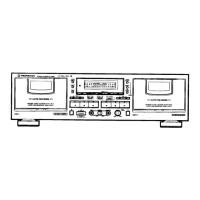


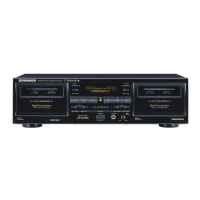
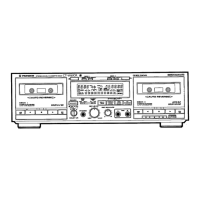
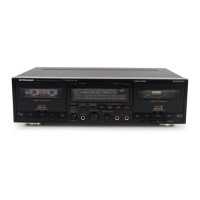
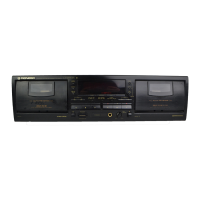
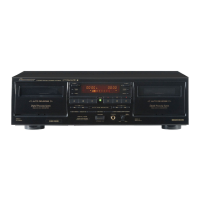
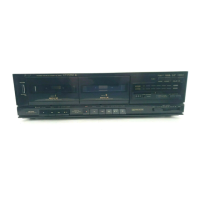
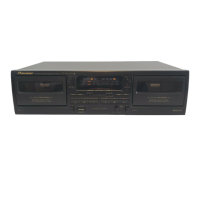
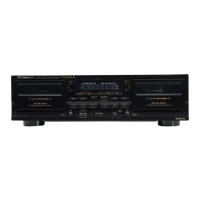

